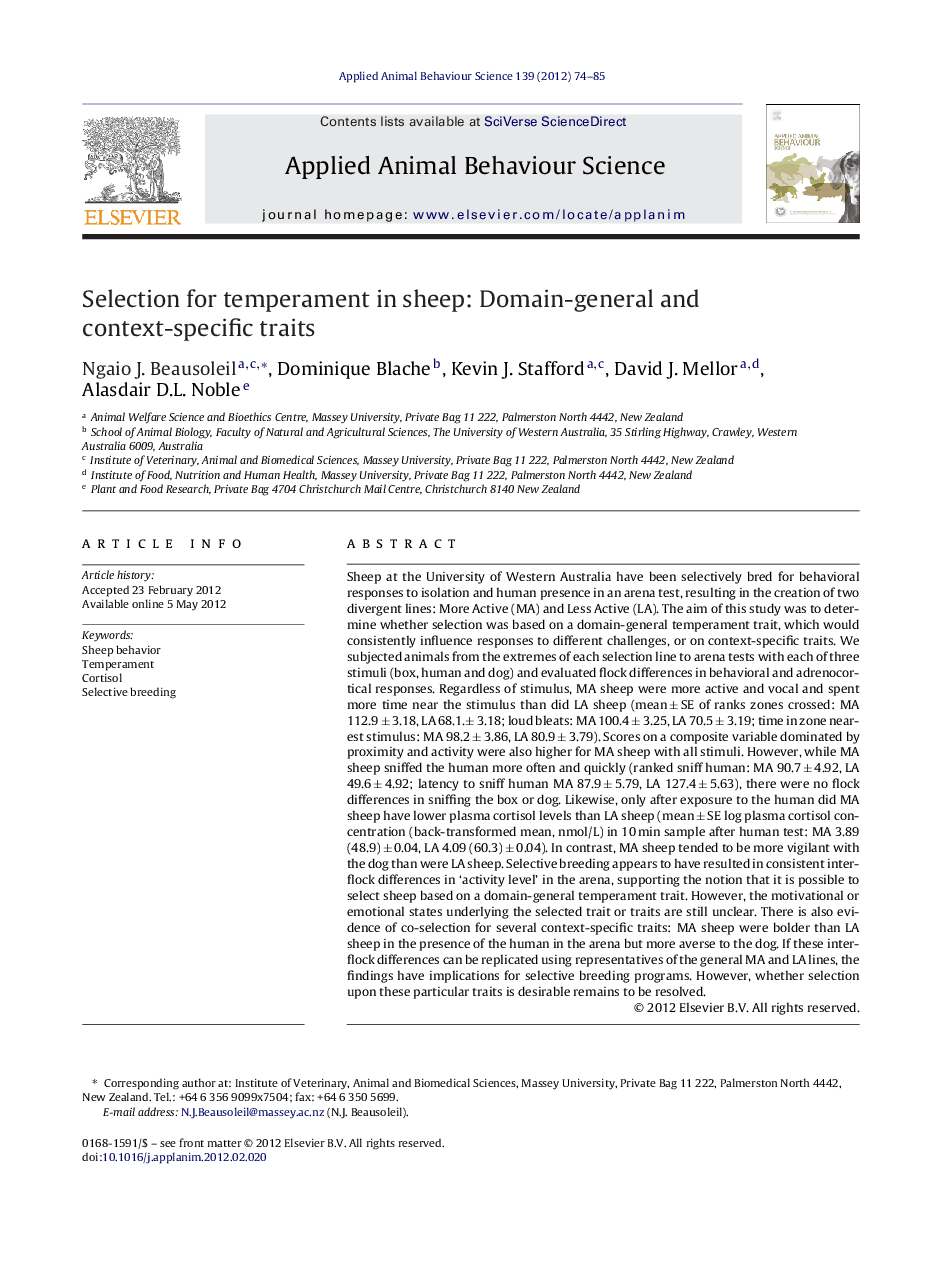| Article ID | Journal | Published Year | Pages | File Type |
|---|---|---|---|---|
| 4523008 | Applied Animal Behaviour Science | 2012 | 12 Pages |
Sheep at the University of Western Australia have been selectively bred for behavioral responses to isolation and human presence in an arena test, resulting in the creation of two divergent lines: More Active (MA) and Less Active (LA). The aim of this study was to determine whether selection was based on a domain-general temperament trait, which would consistently influence responses to different challenges, or on context-specific traits. We subjected animals from the extremes of each selection line to arena tests with each of three stimuli (box, human and dog) and evaluated flock differences in behavioral and adrenocortical responses. Regardless of stimulus, MA sheep were more active and vocal and spent more time near the stimulus than did LA sheep (mean ± SE of ranks zones crossed: MA 112.9 ± 3.18, LA 68.1.± 3.18; loud bleats: MA 100.4 ± 3.25, LA 70.5 ± 3.19; time in zone nearest stimulus: MA 98.2 ± 3.86, LA 80.9 ± 3.79). Scores on a composite variable dominated by proximity and activity were also higher for MA sheep with all stimuli. However, while MA sheep sniffed the human more often and quickly (ranked sniff human: MA 90.7 ± 4.92, LA 49.6 ± 4.92; latency to sniff human MA 87.9 ± 5.79, LA 127.4 ± 5.63), there were no flock differences in sniffing the box or dog. Likewise, only after exposure to the human did MA sheep have lower plasma cortisol levels than LA sheep (mean ± SE log plasma cortisol concentration (back-transformed mean, nmol/L) in 10 min sample after human test: MA 3.89 (48.9) ± 0.04, LA 4.09 (60.3) ± 0.04). In contrast, MA sheep tended to be more vigilant with the dog than were LA sheep. Selective breeding appears to have resulted in consistent inter-flock differences in ‘activity level’ in the arena, supporting the notion that it is possible to select sheep based on a domain-general temperament trait. However, the motivational or emotional states underlying the selected trait or traits are still unclear. There is also evidence of co-selection for several context-specific traits: MA sheep were bolder than LA sheep in the presence of the human in the arena but more averse to the dog. If these inter-flock differences can be replicated using representatives of the general MA and LA lines, the findings have implications for selective breeding programs. However, whether selection upon these particular traits is desirable remains to be resolved.
